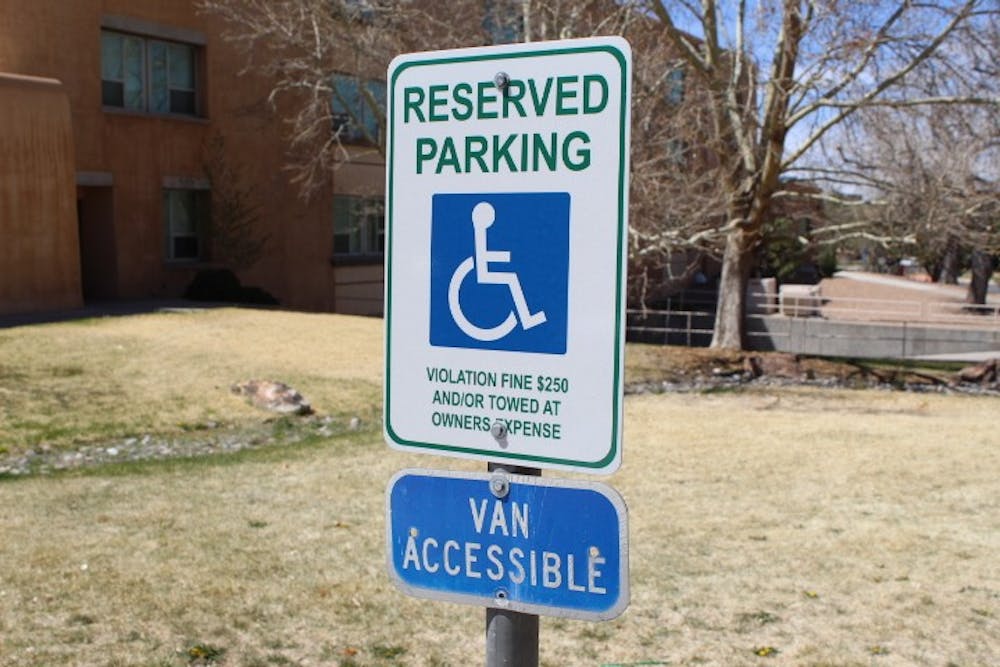Over 30 years have passed since the Americans with Disabilities Act was first signed into law in the U.S. by former President George Bush. While the law was a step forward for addressing accessibility issues, students and staff with disabilities at the University of New Mexico still face mobility issues due to ADA building standards, especially those for historically significant buildings, as well as construction and maintenance.
Any building that was built before March 14, 2012 is not required to comply with the 2010 ADA revised codes, titled the ADA Standards for Accessible Design, and are only required to be brought up to code if a major renovation is planned, according to Disability Rights New Mexico coordinator Bernadine Chavez. Certain parts of historical buildings are not required to comply with ADA code even in the case of a major renovation if it interferes with any historical aspects.
Historic building eligibility can be determined on a federal, state or local level. UNM has qualified 55 of its buildings under the federal, state or local registries, according to the historical preservation plan. There is a transition plan in place to ensure buildings on campus are updated to comply with ADA codes, but there is no set timeline yet, according to university planner Rosie Dudley.
“The (transition plan) has identified more than $41 million worth of ADA renovation projects. The projects that impact life, safety and primary means of access will be prioritized. At this time, the projects’ schedules and funding have not been determined,” Dudley said.
The physical accessibility of buildings has been called into question by student Aster Forrest. Elevator maintenance occurred for six weeks in the UNM art building starting on Feb. 14, Forrest was not formally notified and was not provided an alternate route to the second and third floors of the building until two days after the maintenance began.
The alternate route that was provided for Forrest to access their class was six times longer, encouraging them to enter Ortega hall or CERIA to walk via skyways to the art building. This route also was also not close to any ADA parking, with the nearest being either by Zimmerman or B lot. Ultimately, Forrest had to access the class through Zoom.
UNM student on medical leave Soph Colson also started taking classes in person in fall 2019 but ended up taking asynchronous classes because of accessibility issues.
“The ARC office wheelchair lift was nonfunctional, and my wheelchair didn't fit in their office, and construction stuff was parked in the accessible parking spots. Classrooms weren’t big enough for my wheelchair,” Colson wrote to the Daily Lobo.
The University cannot currently provide a list of what buildings at UNM are not up to current ADA code — just the assessment of which buildings are currently not up to code will be a “yearslong process,” Heather Jaramillo, director of the equal opportunity office of compliance, ethics and equal opportunity, wrote in an email statement to the Lobo.
Other faculty and students at UNM have also experienced mobility issues on campus. Mario Montoya, a professor on campus who uses a wheelchair, said that approximately three years ago when he was a graduate student at UNM, there were times when he could not access his offices on the second and third floors of the humanities building because of an elevator shutdown.
“I was a grad student. I needed to get to my office daily … and couldn't because the elevators didn't work,” Montoya said. “A few times I was lucky enough to have some friends with me and … I got out of the wheelchair, and they lifted it and I was kind of able to crawl up the stairs.”
Forrest said the accessibility issues on campus have caused them emotional and physical pain.
Get content from The Daily Lobo delivered to your inbox
“I don't want them to feel like it was just this logistical error and to feel that this is one person’s experience,” Forrest said. “(It’s) affected so much of my life the past six weeks … It’s just this huge thing that I don’t think they comprehend or appreciate.”
Madeline Pukite is a beat reporter at the Daily Lobo. They can be contacted at news@dailylobo.com or on Twitter @maddogpukite






